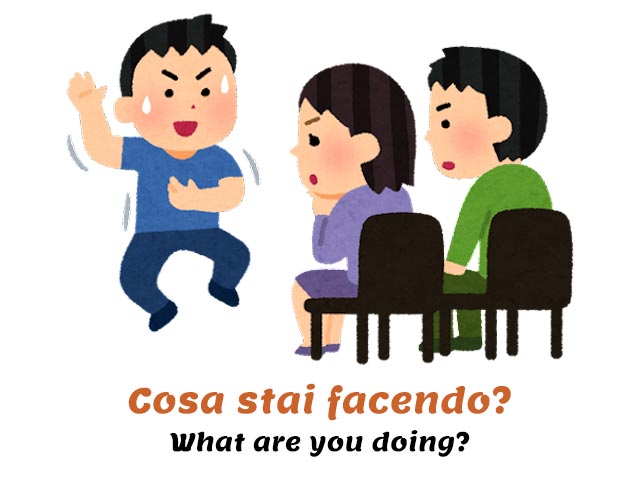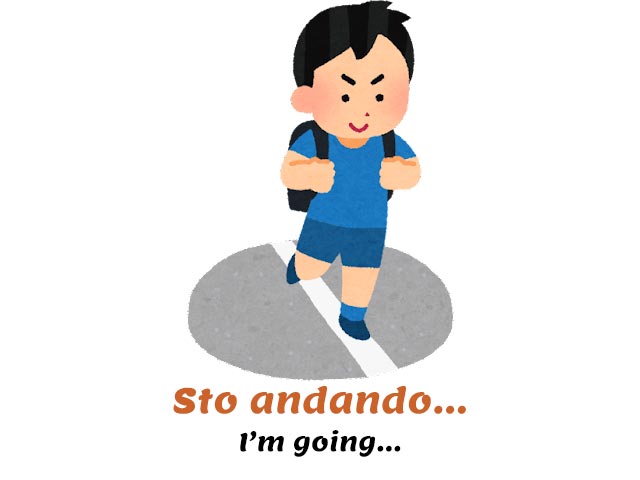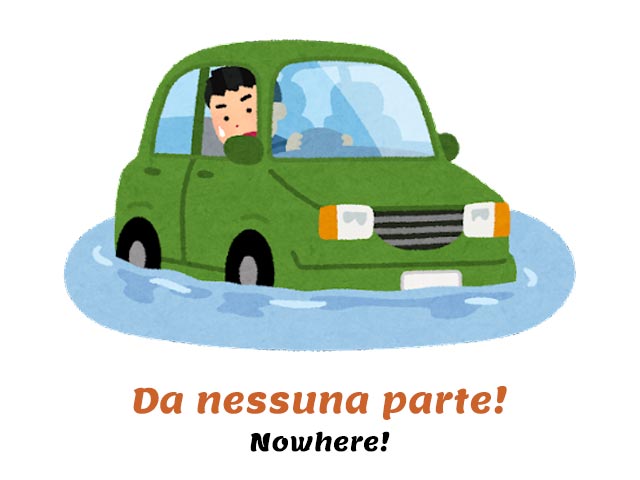How do you say it in Italian?
Dove stai andando?
| Words you should know | Dove (where) + stare (to stay) + andare (to go) |
| When to use this | With 1 person you’re familiar with |
| When NOT to use this | With strangers and groups |
Dove stai andando?
Where are you going? (singular, familiar)

The gerund tense in Italian uses the verb stare, to stay, while English uses to be. Stai is basically the second person singular present conjugation of stare (that’s a mouthful!).
We then have the gerund form of the verb andare, which is andando.
Andare, andando, andato
To go, going, gone
Usually, to create the gerund form of a verb you simply append the endings -ando/endo to the root form of the verb, also known as the stem.
What’s the stem of a verb?
Italian verbs in the infinitive end in -ARE, -ERE and -IRE.
Cut out this part and you will be left with the root verb.
Examples:
tremare ➡️ trem-
piovere ➡️ piov-
cucire ➡️ cuc-
Italian verb endings for every tense are added to these root forms of the verb.
Verbs in -are will take -ando, and verbs in -ere and -ire will take -endo.
For example, tremare (to tremble) will become tremando (trembling), piovere (to rain) will become piovendo (raining).
Andare is an irregular verb but its gerund form is regular: and…ando.
This is why you’ll translate where are you going in Italian as dove stai andando?.

Dove state andando?
| When to use this | With a group of people |
| When NOT to use this | With strangers and 1 person at a time |
Dove state andando?
Where are you going? (plural)
In Italian, unlike English, there are two kinds of “you”. There is a singular “you” and then there is a plural “you”. If you’re speaking to a group, you’ll need to conjugate any verb or pronoun accordingly, and don’t forget the gender!
For example, you can say…
Bambine, dove state andando? – Stiamo andando a giocare in giardino.
Girls, where are you going? – We are going to play in the garden.
Dove state andando? – Da nessuna parte!
Where are you going? – Nowhere!

Dove sta andando?
| When to use this | With 1 person you’re NOT familiar with |
| When NOT to use this | With friends, family and groups |
When speaking formally, Italians address each other with the subject “she”, lei. Use Lei in the written form if you want to be very polite.
Dove sta andando?
Where are you going? (formal)
For example, you can say…
Scusi, dove sta andando?
Excuse me, where are you going?
More free Italian resources
You might want to keep learning Italian online with these free Italian resources:
❤️ If you liked this lesson on how to say where are you going in Italian, share it with your friends!


